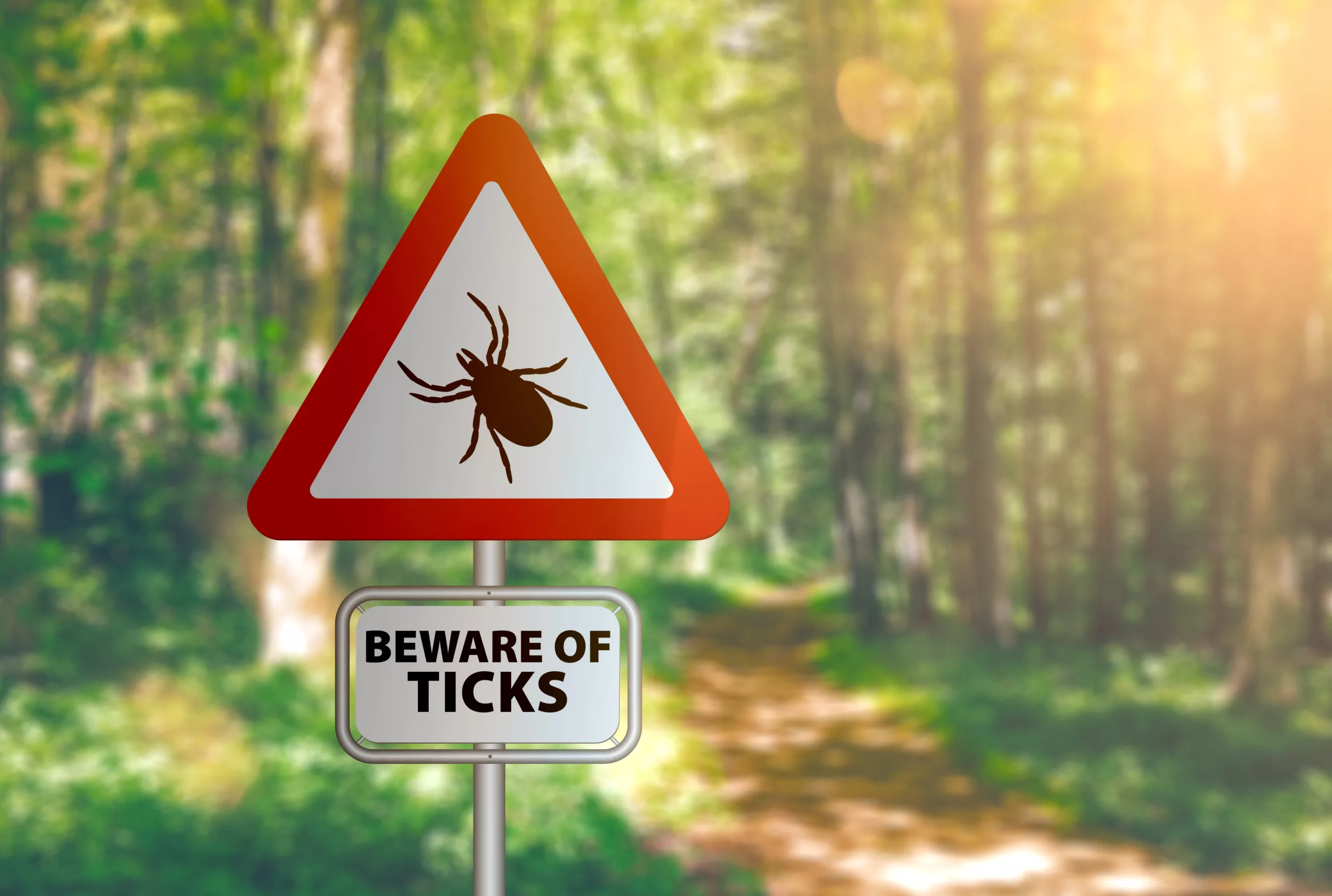
Lyme disease is an infectious disease caused by Borrelia burgdorferi—a bacterium that is carried and transmitted by infected ticks. When not treated, Lyme disease can lead to complications, including severe arthritis, fatigue, and brain fog. Fortunately, it can be effectively prevented and treated, especially when caught in its earliest stages.
Symptoms of Lyme Disease
Lyme disease begins as a tick bite, which you may or may not notice on your skin. Much like mosquito bites, tick bites are small and cause itching.
Early signs and symptoms of Lyme disease usually begin within 3 to 30 days after the tick bite. During this time, your symptoms may include:
- Fever and chills
- Headache, muscle aches, and joint aches
- Fatigue
- Swollen lymph nodes
- Erythema migrans rash at the site of the tick bite, which affects between 70% to 80% of people with Lyme disease (this rash can appear anywhere on the body, takes on the appearance of a target or bullseye, and may feel warm to the touch)
Other symptoms of Lyme disease can begin days to months after the tick bite. Later symptoms may include:
- Severe headaches
- Stiffness in the neck
- Additional erythema migrans rashes that develop on other areas of the body
- Severe arthritis
- Swelling of the eye or eyelid
- Eye pain or vision loss
- Facial palsy
- Pain that comes and goes in the joints, tendons, muscles, and bones
- Irregular heart rate or palpitations
- Dizziness
- Shortness of breath
- Numbness, tingling, and pain in the hands or feet
- Nerve pain
- Inflammation of the brain and spinal cord
Causes of Lyme Disease
Ticks that carry the Borrelia burgdorferi bacterium that causes Lyme disease typically live in upper midwestern states and northeastern and mid-Atlantic states. Maine, Minnesota, Pennsylvania, and Wisconsin are some of the many states in which Lyme disease is commonly transmitted.
The ticks in these regions that spread Lyme disease are known as black-legged ticks or deer ticks. You can get Lyme disease if you are in one of these regions and get bitten by an infected tick.
Deer ticks live in the woods and grassy or shrubby areas and usually aren’t active in freezing temperatures. You can get Lyme disease when spending time outdoors in regions where these ticks are active, such as when hiking, camping, or landscaping.
Diagnosing Lyme Disease
Your doctor may easily diagnose Lyme disease if you live in a region where this disease is common.
Diagnosing Lyme disease usually involves a physical examination of your tick bite and rash, a review of all your symptoms, and a discussion about where you could have been exposed to the infected tick. Your doctor may also run one or more blood tests to detect the presence of antibodies against Borrelia burgdorferi proteins.
Treatments for Lyme Disease
Lyme disease can often be successfully treated using antibiotics. Your doctor may prescribe antibiotic pills, which should be taken for 10 to 14 days even if your symptoms have cleared before then. This helps ensure the infection has completely left your body.
In severe cases of Lyme disease, your doctor may administer antibiotics directly into your vein. IV antibiotic treatment is more common among people whose Lyme disease is causing chronic arthritis and problems with the heart or nervous system.
Tips for Preventing Lyme Disease
You can take steps to prevent Lyme disease, even if you spend lots of time outdoors in a region where deer ticks are active.
Steps you can take to reduce your risk for Lyme disease include:
- Wearing long-sleeved shirts and pants when spending time outdoors
- Wearing shoes or boots that fully cover and protect your feet
- Applying tick or insect repellent to your skin before heading outside
- Inspecting your body, and your children’s and pets’, daily to identify and remove ticks
- Removing ticks carefully with tweezers, as crushing them can increase the risk of infection
- Clearing your yard of wood piles, shrubs, and other areas where ticks are likely to thrive
- Showering as soon as possible after being outside to remove loose ticks
- Checking all your outdoor gear before storing it inside, such as backpacks and tents
- Staying on cleared paths and avoiding wooded and shrubby areas
- Destroying and eliminating ticks by putting them in alcohol, then flushing them down a drain or toilet
Make an appointment with your healthcare provider if you think you may have been bitten by a tick and infected with Lyme disease. Your provider can perform an exam, properly diagnose your condition, and discuss your available treatment options.